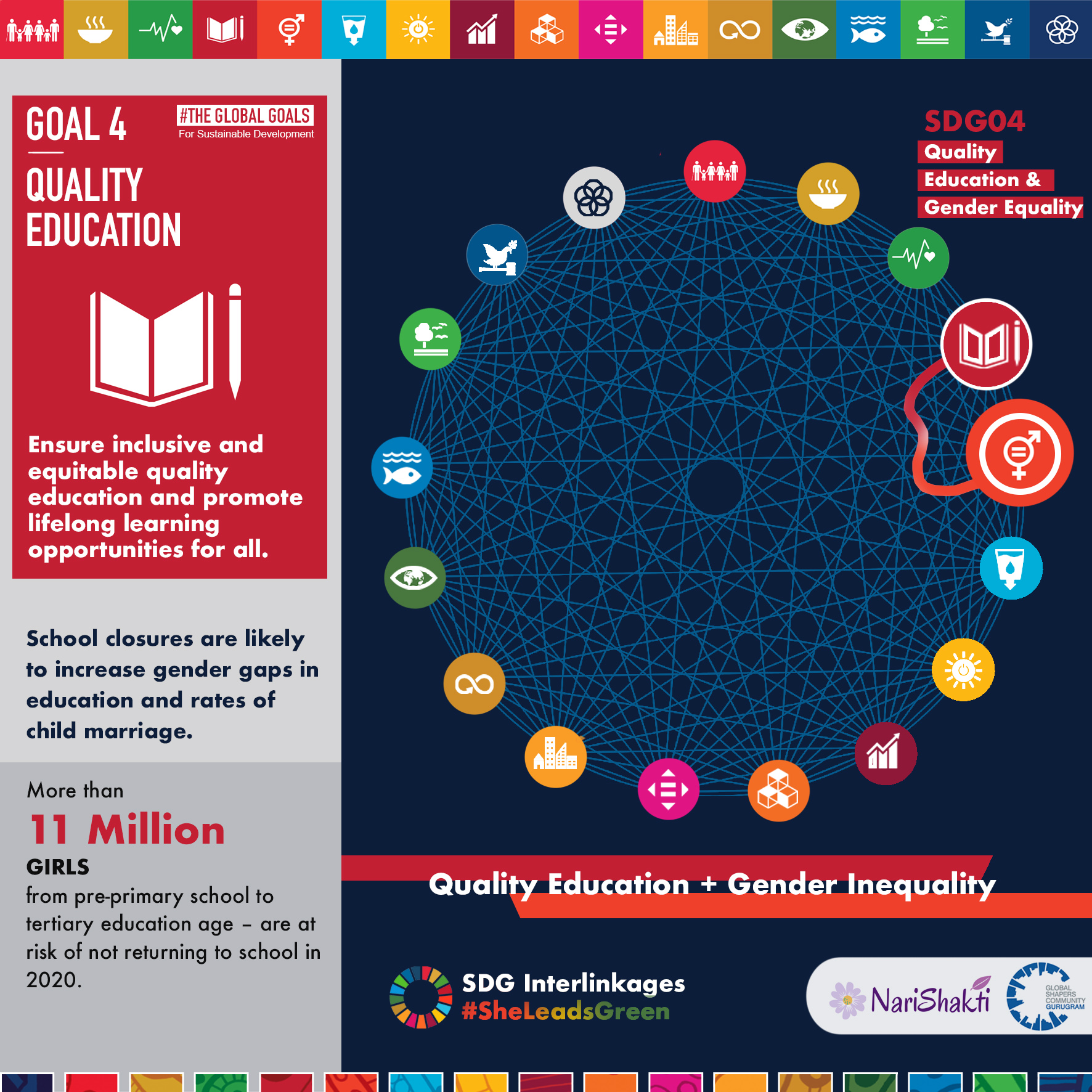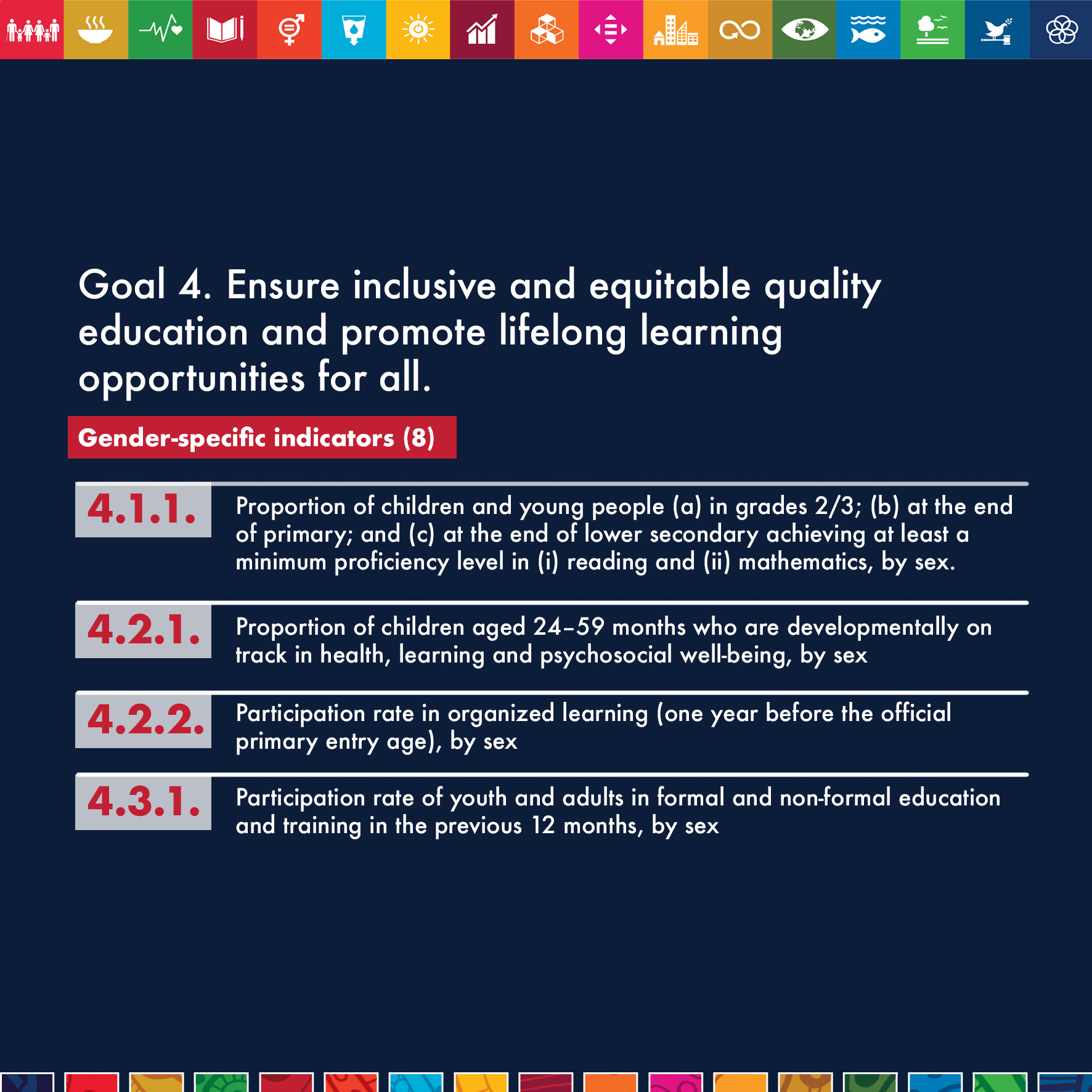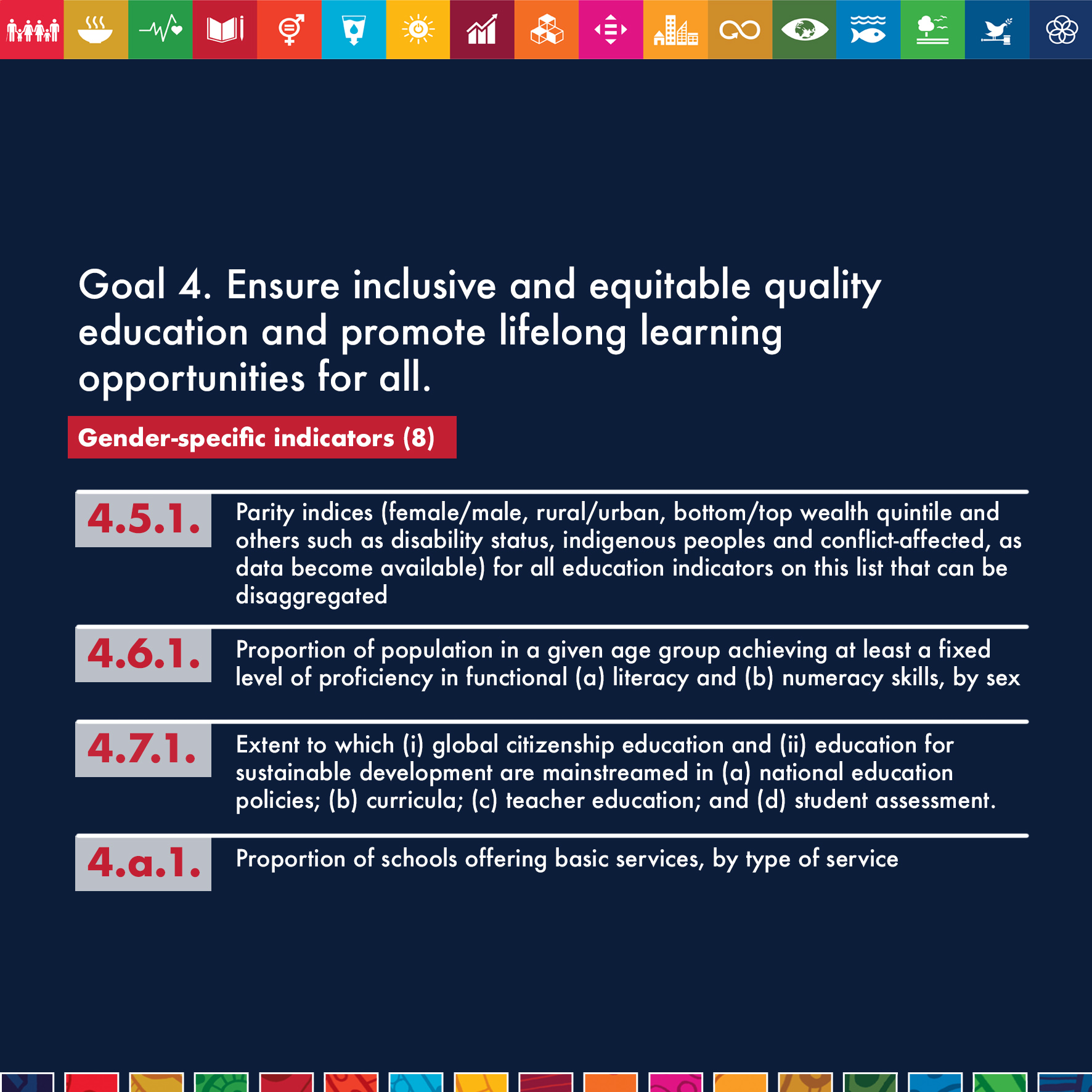
Gender parity for quality education (SDG 4)

Why do we need to look at education from a gender lens?
There are some harrowing statistics that point to a larger degree of illiteracy among females than males, especially in poorer households. Almost 15 million girls in the primary school age will likely never receive proper quality education and be literate, as compared to 10 million boys of the same age, as per a report by UN Women.
How is education and gender-linked?
There are 10 targets and 12 indicators to achieve SDG 3. 8 out of 12 indicators are gender-specific.
- There is no other SDG than SDG 4 on quality education, which has so many overlaps with SDG 5 on gender equality.
- In fact, almost every target of SDG 4 articulates equal access to “boys and girls” on various levels in connection to quality education. Out of all the 11 indicators for measuring SDG 4 progress, only 3 of them are independent of any gender implications, while 8 of them are directly linked to gender considerations.
A case story from our partner The Intelligent Indian (TIIx)
A recent article highlighted that there are currently, less than 25 percent of the influential positions in the COP26 leadership team held by women. To bridge this gap, The Intelligent Indian (TIIx) has designed ‘The All-Girls Eco-Programme’, to inspire the next generation of female environmental leaders by educating, equipping, and empowering girls around the globe to envision solutions to environmental problems on a local or individual level. This summer cohort (2021) witnesses the participation of 98 young girls from 9 countries. The program is supported by the youth wing of the World Bank Group.
What outcomes can we achieve in SDG 4 if we reach gender parity?
With the existing state of quality education is skewed more towards access to males than females, working on gender parity efforts will fulfill many of the targets of SDG 4. These include
- Target 4.1 on ensuring boys and girls complete free, equitable and quality primary and secondary education
- Target 4.2 on ensuring that all girls and boys have access to quality early childhood development, care and pre-primary education
- Target 4.3 on ensuring equal access for all women and men to affordable and quality technical, vocational and tertiary education along with 5 other targets (out of 11 total targets) of SDG 4.
There is also the matter that there are more female primary and secondary school teachers in the majority of the regions, therefore boosting gender parity efforts will rapidly accelerate SDG 4 efforts towards universal, inclusive, and equitable education as empirical evidence suggests a greater tendency of females to become teachers and impart education.
References
- https://www.unwomen.org/-/media/headquarters/attachments/sections/library/publications/2019/progress-on-the-sdgs-the-gender-snapshot-2019-single-pages-en.pdf?la=en&vs=5813
- https://www.indiatoday.in/education-today/featurephilia/story/why-do-we-see-more-female-teachers-in-indian-schools-1806042-2021-05-23




